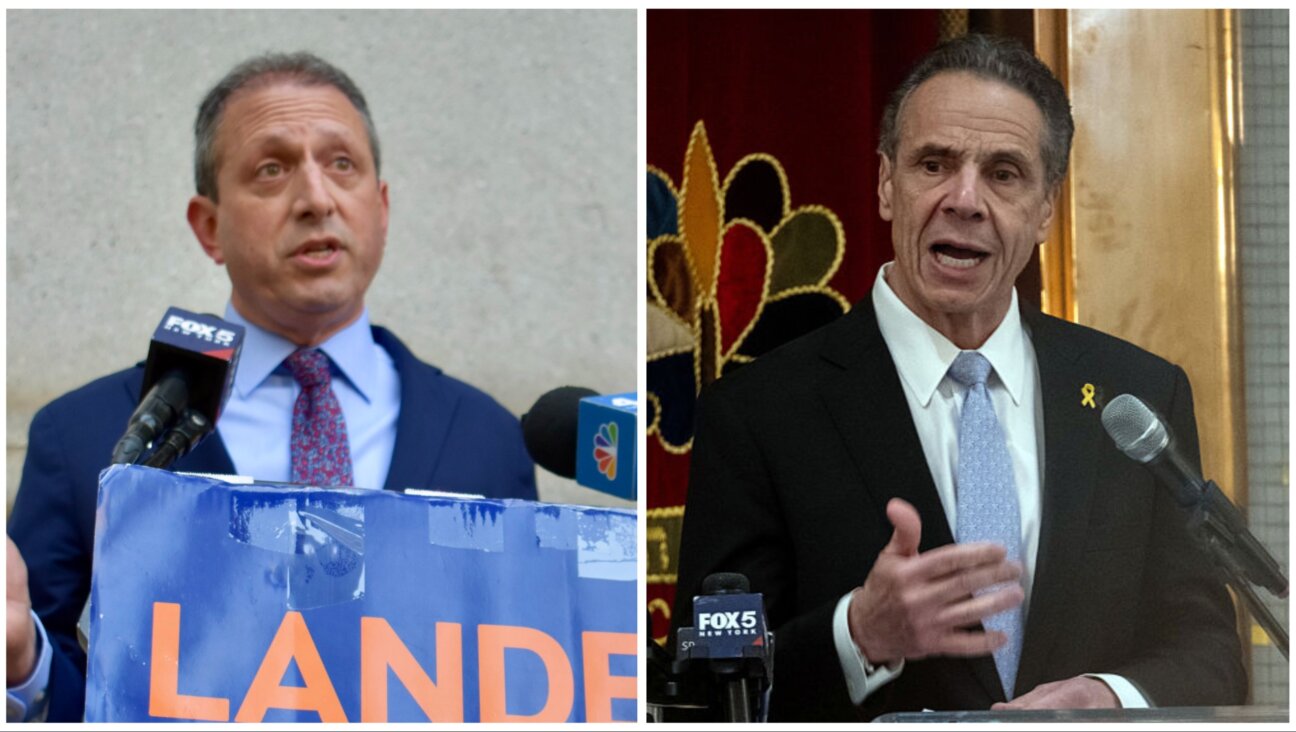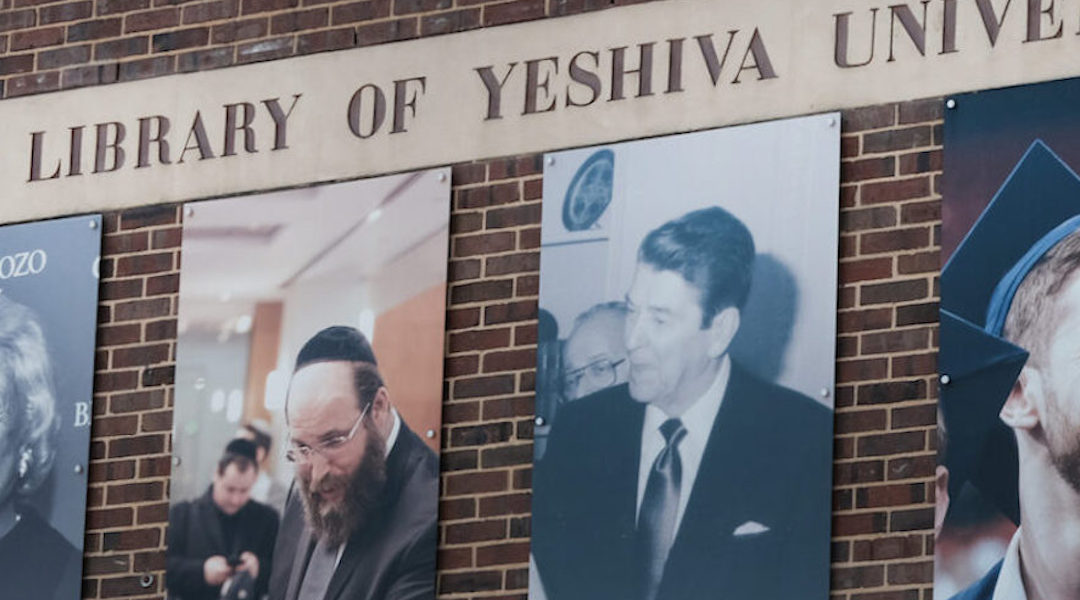When ‘All the Rest’ Was the Rage
If all the rest is commentary, as Hillel the Elder once said, there once was a time when “all the rest” was all the rage.
It has been 58 years since the founding of Commentary magazine, a small Jewish journal devoted to society and culture that eventually landed in some of the most influential mailboxes inside the Beltway. Some of the great luminaries of the 20th-century cultural scene graced its pages, including Philip Roth and Saul Bellow, Isaac Bashevis Singer and Gershom Scholem, Susan Sontag and Cynthia Ozick. It was politics, however, that put it on the map, from early bylines of such political heavyweights as Daniel Patrick Moynihan and Jeane Kirkpatrick to the federal “it” boys of today, Douglas Feith and Richard Perle.
At a conference last week in New York sponsored by the City University of New York, the Myer and Rosaline Feinstein Center for American Jewish History at Temple University and the American Jewish Committee, participants looked back at the history and influence of the journal, marveling nostalgically at its past successes and wondering about its future prospects.
Commentary reached the height of its influence in the 1980s under the stewardship of Norman Podhoretz. Ronald Reagan’s presidency shined a spotlight on the magazine’s laceration of the American civil rights movement, the New Left and the counterculture, its criticism of the arms control agreements as soft and affirmative action as unfair and, most prominently, its fierce stand against Soviet totalitarianism and hawkish defense of the state of Israel. But the tribune of the right had, in fact, once been a sweetheart of the left.
Launched in 1945 under editor Elliot E. Cohen, the journal, which was and still is published by the American Jewish Committee, was conceived as a liberal magazine. Its focus was to be politics and culture, with an emphasis on issues of interest specifically — but not exclusively — to American Jews.
Commentary blazed a trail with trenchant articles on the Germans’ war against the Jews, George Orwell’s commentary on the British elections of 1945 and edgy cultural pieces, like the 1945 Freudian rendition of the kashrut laws by Isaac Rosenfeld, titled “Adam & Eve on Delancey Street.” But the causes that would come to define the magazine were nowhere to be found in the early issues. According to two conference presenters, Harvard University professors Ruth Wisse and Nathan Glazer, there was little in those first issues that hinted at the fierce strain of anti-communism that would characterize the magazine in its heyday, and the editors were at best agnostic on the question of Palestine (until 1948, after which they became staunch defenders of the Jewish state).
In 1960, Podhoretz took the helm. Podhoretz, then 30, was a junior member of the New York Intellectuals, an influential circle of liberal writers and critics. Known to insiders as “The Family,” the mostly Jewish group — including Lionel Trilling, Irving Howe, Nathan Glazer, Saul Bellow, Gertrude Himmelfarb and Irving Kristol — had its roots in 1930s Marxism, but its members were in various stages of moving rightward during the 1950s.
Podhoretz initially took the opposite tack. Taking over Commentary on the eve of the convulsive 1960s, he steered the magazine from liberalism to a stylish radicalism, arguing against middle-class values and in favor of the Counterculture. But by the late 1960s, with riots erupting on college campuses, American cities boiling over with racial tension and anti-war protests filling the streets, Podhoretz became alarmed at the consequences of his own ideas. Reacting to the anti-Americanism of his fellow leftists, he became convinced that this anti-Americanism was “uncannily similar” to antisemitism, according to Richard Gid Powers, a history professor at the Graduate Center of the City University of New York and at the College of Staten Island.
Podhoretz’s reaction was profound, and profoundly personal. “I was infected with the virus of utopianism, from which I’ve spent the last 40 years recovering,” he told the conference. “I’m a recovering utopian.”
As part of his rehabilitation, Podhoretz flew rightward into the nascent movement of neoconservatism. Podhoretz spent the Carter years turning Commentary into an ideas incubator for the right. Many of those ideas were inspired by a singular belief: that there were powerful evil forces in the world and that such power had to be met with power. The magazine became the leading exponent of neoconservatism, offering sharp critiques of liberal social programs and economic doctrines while arguing for strong anti-Communist policies and a muscular American defense.
“Unlike the old Right, which had no first-hand experience of the Left and therefore had been ineffective in fighting it, the neoconservatives associated with Commentary were so familiar with the ideological enemy that they knew exactly where to attack and why,” according to an unsigned introduction in “What Commentary Has Wrought,” an anthology issued by the magazine for its 25th anniversary. “Thanks to the power and cogency of their arguments, the hegemony of the Left in the world of ideas was broken, and in this way Commentary was able to play a key role in the creation of a new climate of opinion — the climate that made possible the election of someone like Ronald Reagan.”
When you make someone’s election possible, you often make a friend — or at least a loyal reader — for life. Republican administration officials read Commentary, and frequently plucked writers from its pages for prominent federal positions. Most notably, Moynihan and Kirkpatrick were appointed U.S. ambassadors to the United Nations — in 1975 and 1980, respectively — partly on the strength of foreign policy articles in Commentary. The editors of Commentary were not merely presenting ideas to the American government; they were offering people who could make them reality.
But the magazine’s strengths — its assuredness, its single-mindedness, its commitment to its newfound neoconservative values — would also be its weaknesses. For example, Commentary published some of the first and the fiercest critiques of urban liberalism, which, according to presenter Fred Siegel, were right on target. But the editors, so confident in their doomsday predictions, failed to notice when, in the 1990s, American cities began to undergo a renaissance. “Commentary had argued itself out of seeing any hope for the cities,” said Siegel, a history professor at the Cooper Union for the Advancement of Science and Art. “Commentary had won the debate. It’s too bad they didn’t pick up the prize.”
And Alan Brinkley, a history professor at Columbia University, noted that Commentary shared with its enemies on the left a tendency to highlight the excesses of a few in order to discredit the serious commitments of the many. “As both a product of those years, and as a historian of them, I find it hard to accept the easy equations that Commentary sometimes made: between the left and liberalism; between criticizing American policy and being anti-American; between opposing Israeli policy and being anti-Israel or even anti-Semitic; between favoring détente and condoning communism,” he said.
But, ah, the value of those easy equations. While Commentary was busy generating ideas for those on the right, no such organ developed for liberalism. The New York Review of Books and The New Republic are undoubtedly influential, but neither saw its ideas or dramatis personae harvested by Democratic administrations.
Over the past quarter-century, conservatives have poured seemingly endless sums of money into an ideas industry of think tanks and publications. Partly as a result, Republicans often appear more ideologically committed to conservatism than Democrats do to liberalism. Yet there is a lesson for Democrats in the keynote address to last week’s conference by Neal Kozodoy, Podhoretz’s successor as editor in chief of Commentary. Kozodoy invoked the neoconservative economist Milton Friedman, who argued that actions taken in crises depend on whatever ideas are lying around. “That, I believe,” wrote Friedman, “is our basic function: to develop alternatives to existing policies, to keep them alive and available until the politically impossible becomes politically inevitable.”
With their eyes on this prize, Commentary’s neoconservatives profoundly affected American policy at the end of the last century. In particular, the post-September 11 foreign policy of the current Bush administration bears the clear fingerprint of the magazine’s fundamental tenet, brought to life these days in the image of the Middle East as a swamp from which evil forces emerge, a swamp that must be drained.
But if recent events seem to have vindicated Commentary’s world view, there have been some embarrassing missteps. As CUNY Professor John Patrick Diggins noted, Commentary was a supporter of the Reagan administration’s policy, now known to be misguided, of funding Osama bin Laden against the Soviets in Afghanistan. Another participant recalled the 1994 broadside by Midge Decter, a Commentary contributor and Podhoretz’s wife, defending the religious right against the Anti-Defamation League’s charges of intolerance. Podhoretz himself was forced to flip-flop in 1993, reversing his own years-long insistence that American Jews had no moral right to criticize Israel’s security policies; the rule no longer held, it seemed, after the Oslo accords, which he opposed. And some recent issues have crossed the border into eccentricity, delving into such topics as “re-examining” Darwinism.
In 1995, Podhoretz retired as editor in chief of the magazine he had steered for 35 years, leaving Kozodoy to navigate Commentary through increasingly different terrain. The Bush administration has the ideas, spawned primarily from Commentary; what it needs is advice — sharp, frequent analysis — on how to implement them.
Commentary’s circulation, reportedly around 30,000, is down one-quarter from its peak. As the sparse audiences at the conference attest, a new day has dawned on conservative America, and political movers and shakers have been looking elsewhere for inspiration. If the new crowd looks strikingly like a younger version of the old, that’s partly genetic. On the morning of the conference’s second day, someone handed John Podhoretz, Norman’s son, a section from that day’s New York Times. There, on the cover, was an article about The Weekly Standard, the newsmagazine edited by William Kristol, son of Irving, and to which John Podhoretz is a contributor. It was titled “White House Listens When Weekly Speaks.”
The Forward is free to read, but it isn’t free to produce

I hope you appreciated this article. Before you go, I’d like to ask you to please support the Forward.
At a time when other newsrooms are closing or cutting back, the Forward has removed its paywall and invested additional resources to report on the ground from Israel and around the U.S. on the impact of the war, rising antisemitism and polarized discourse.
Readers like you make it all possible. We’ve started our Passover Fundraising Drive, and we need 1,800 readers like you to step up to support the Forward by April 21. Members of the Forward board are even matching the first 1,000 gifts, up to $70,000.
This is a great time to support independent Jewish journalism, because every dollar goes twice as far.
— Rachel Fishman Feddersen, Publisher and CEO
2X match on all Passover gifts!
Most Popular
- 1
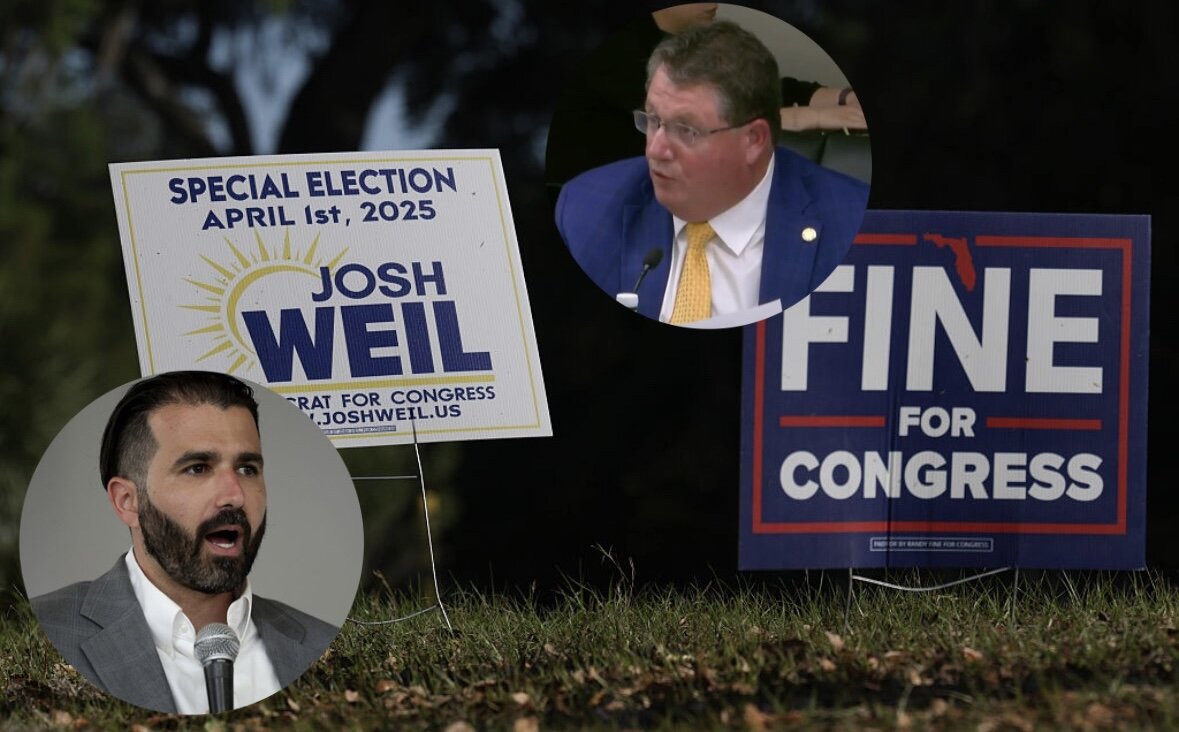
News A Jewish Republican and Muslim Democrat are suddenly in a tight race for a special seat in Congress
- 2

Fast Forward The NCAA men’s Final Four has 3 Jewish coaches
- 3

Fast Forward Cory Booker proclaims, ‘Hineni’ — I am here — 19 hours into anti-Trump Senate speech
- 4

Film & TV What Gal Gadot has said about the Israeli-Palestinian conflict
In Case You Missed It
-
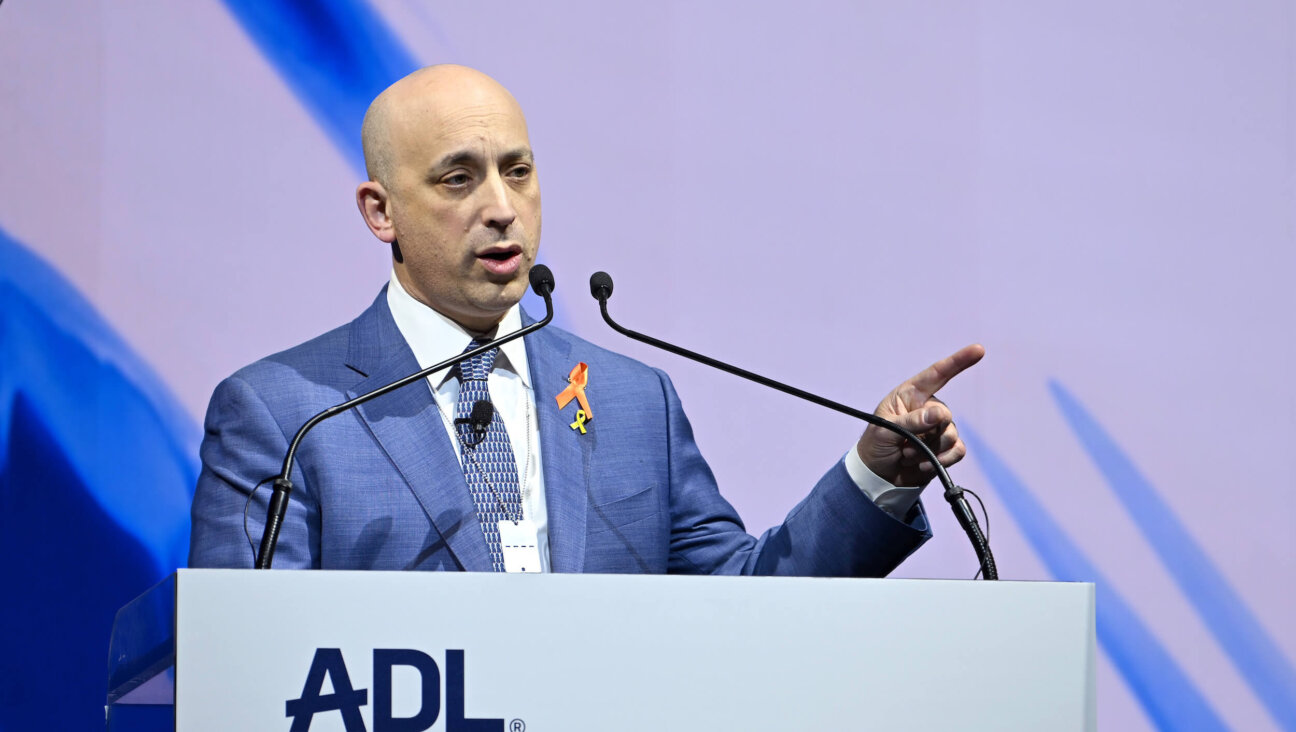
Opinion The ADL reversed its support for Trump’s student deportations. You should too
-

Fast Forward Senate rejects Bernie Sanders’ proposal to block some weapons sales to Israel
-
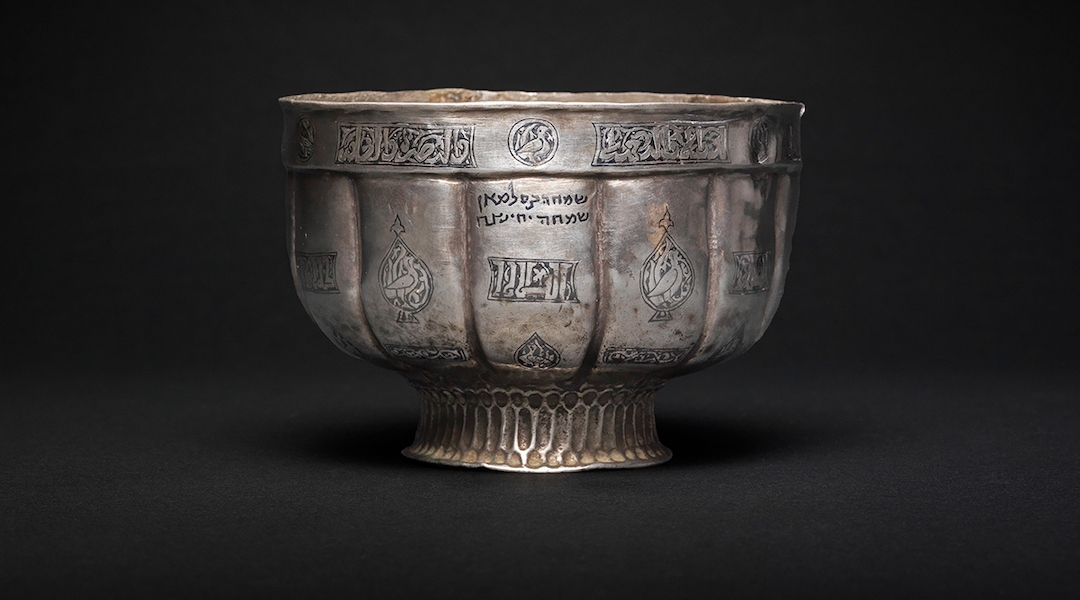
Fast Forward Sotheby’s to auction earliest known kiddush cup
-
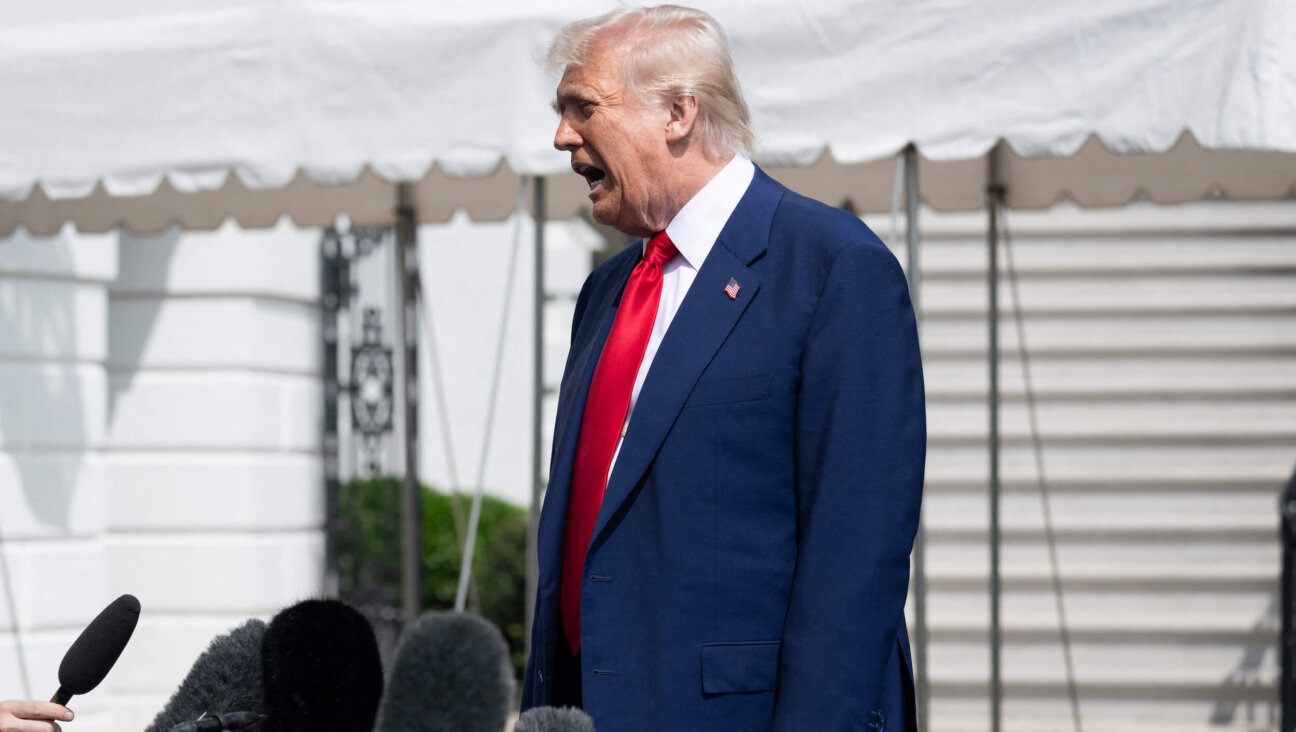
Opinion Trump’s new tariffs on Israel are a BDS dream come true
-
Shop the Forward Store
100% of profits support our journalism
Republish This Story
Please read before republishing
We’re happy to make this story available to republish for free, unless it originated with JTA, Haaretz or another publication (as indicated on the article) and as long as you follow our guidelines.
You must comply with the following:
- Credit the Forward
- Retain our pixel
- Preserve our canonical link in Google search
- Add a noindex tag in Google search
See our full guidelines for more information, and this guide for detail about canonical URLs.
To republish, copy the HTML by clicking on the yellow button to the right; it includes our tracking pixel, all paragraph styles and hyperlinks, the author byline and credit to the Forward. It does not include images; to avoid copyright violations, you must add them manually, following our guidelines. Please email us at [email protected], subject line “republish,” with any questions or to let us know what stories you’re picking up.








